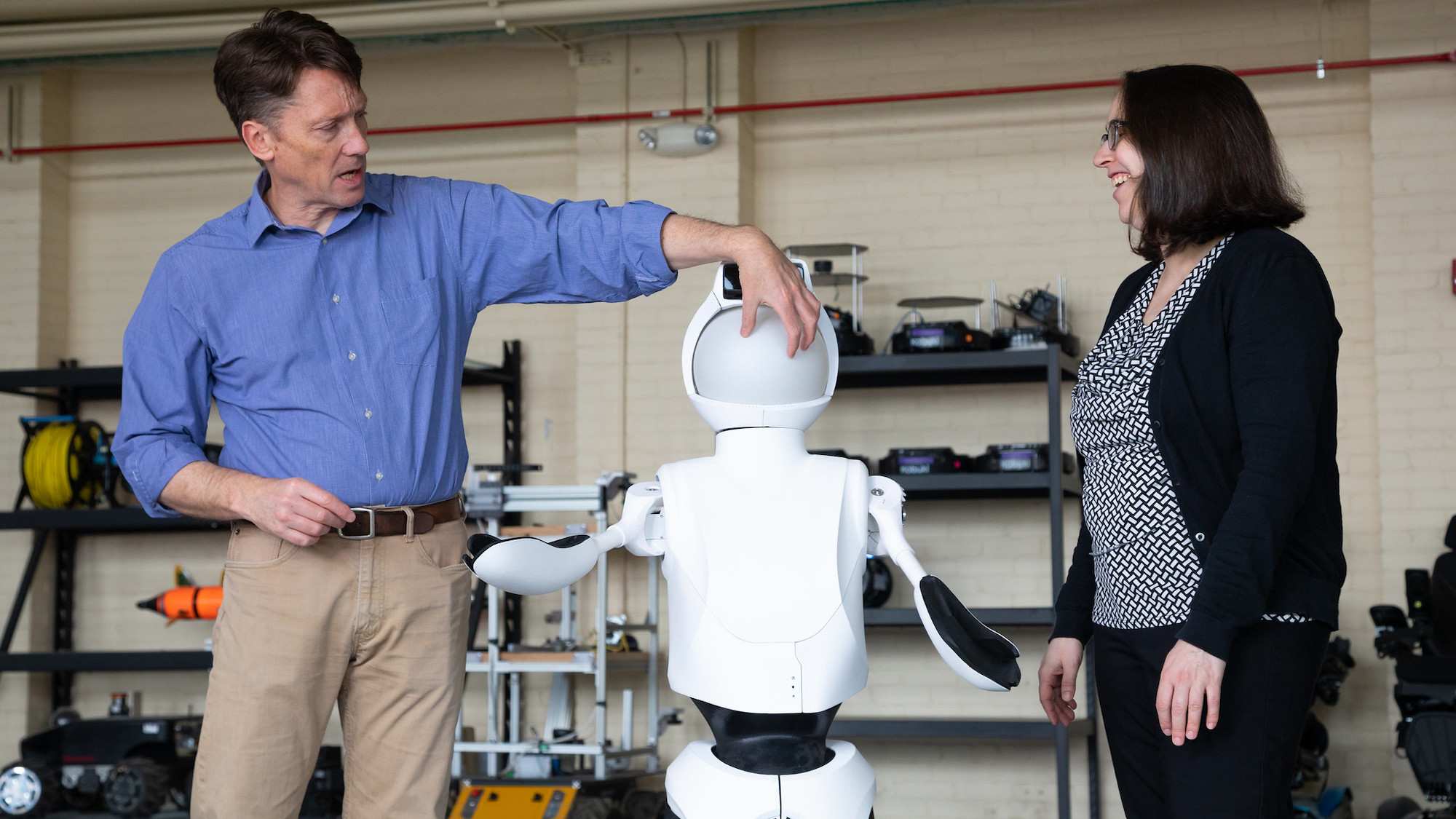

Immense strides in human-robot interactions have been made over the past few years. But, all of these robots tend to be quite different. The lack of an affordable, generalized, modular robotic platform hampers many researchers’ progress, alongside their ability to share and compare findings.
The National Science Foundation, an independent US government-funded agency supporting research and education, wants to accelerate advancements in robotics, and is offering a $5 million fleet of standardized humanoid robots to speed things along. On Monday, the NSF announced plans to distribute another 50 of its Quori bots to various research projects, with assistance from Oregon State University, University of Pennsylvania’s GRASP Laboratory, and the robotics software company, Semio.
[Related: Meet Garmi, a robot nurse and companion for Germany’s elderly population.]
First designed with support from the NSF’s Computer and Information Science and Engineering (CISE) Community Research Infrastructure, Quori robots feature an omnidirectional, wheeled base, expressive video screen face, two gesturing arms, and a bowing spine. Quori is made to function both in labs and “in the wild,” according to its official description.
A previous pilot program built and tested 10 Quori robots that were subsequently awarded to research teams, including one from Carnegie Mellon University, who used their model to focus on social behavior and communication methods between humans and robots.
The new multimillion-dollar expansion will see many more of these standardized humanoid bots made available to applicants. All of Quori’s hardware designs are available as open-source, meaning anyone can access them to potentially build their own versions.
“A big hurdle in robotics research has been the lack of a common robot to work with,” Bill Smart, a professor of mechanical, industrial, and manufacturing engineering in OSU’s College of Engineering and project co-lead, explained in a statement. “It’s tough to compare results and replicate and build on each other’s work when everyone is using a different type of robot. Robots come in many shapes and sizes, with different types of sensors and varying capabilities.”
[Related: Robot trash cans have survived a New York City field test.]
Alongside OSU project co-lead Naomi Fitter, Smart’s team will primarily set up and maintain a resource network for the Quori fleet, as well as beta test the robots. The project aims to soon connect both researchers and students through online collaborations, events, and various other opportunities in hopes of “building a community of roboticists that can learn from one another and advance the pace of research.”
According to Smart, pairing newcomers alongside experienced individuals can help quickly bring them up to speed in their field, while also increasing diversity and access in a field that is inordinately composed of white male researchers.
